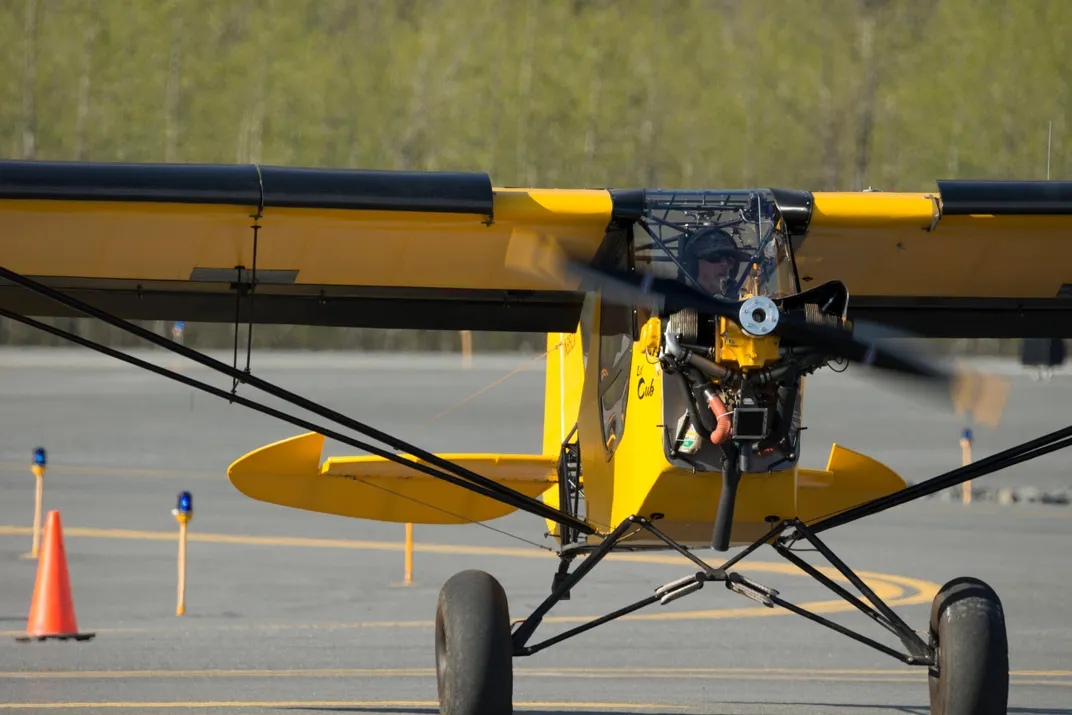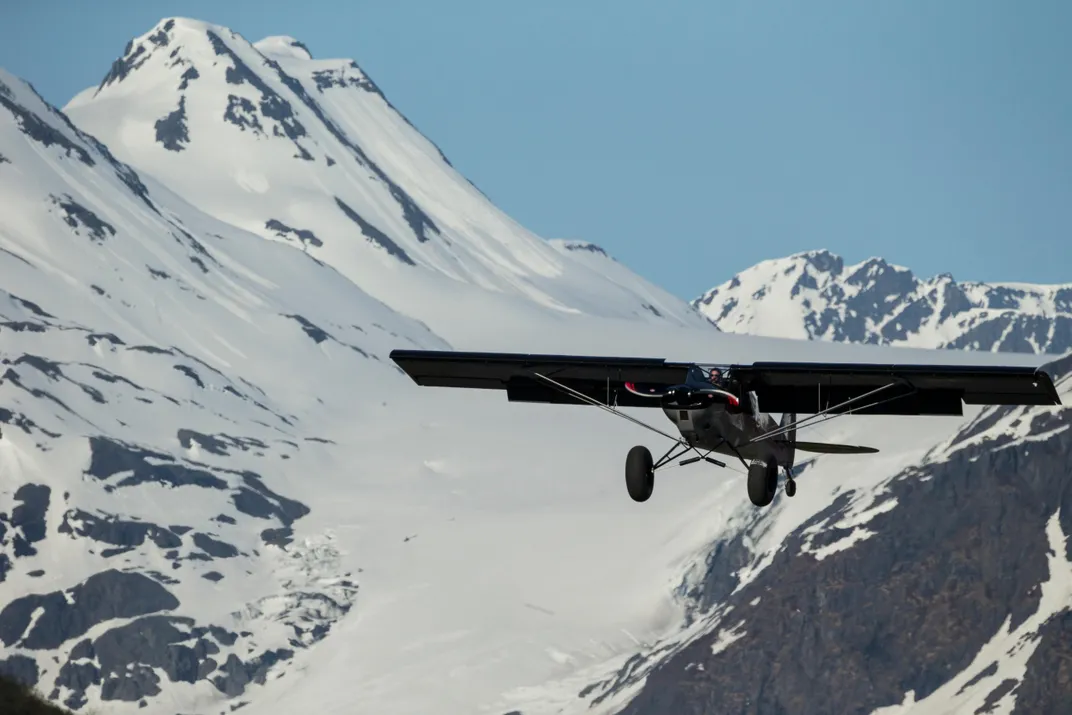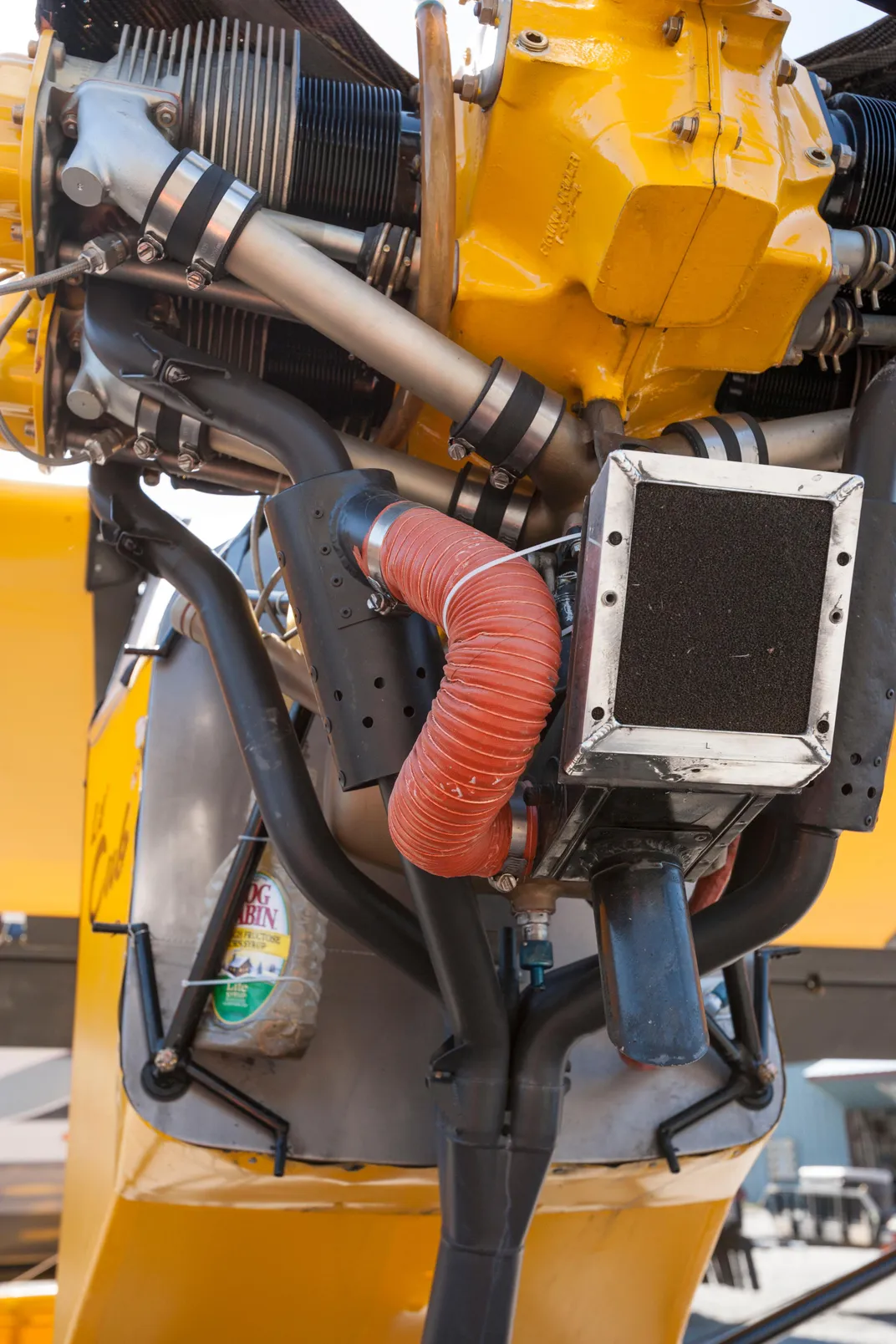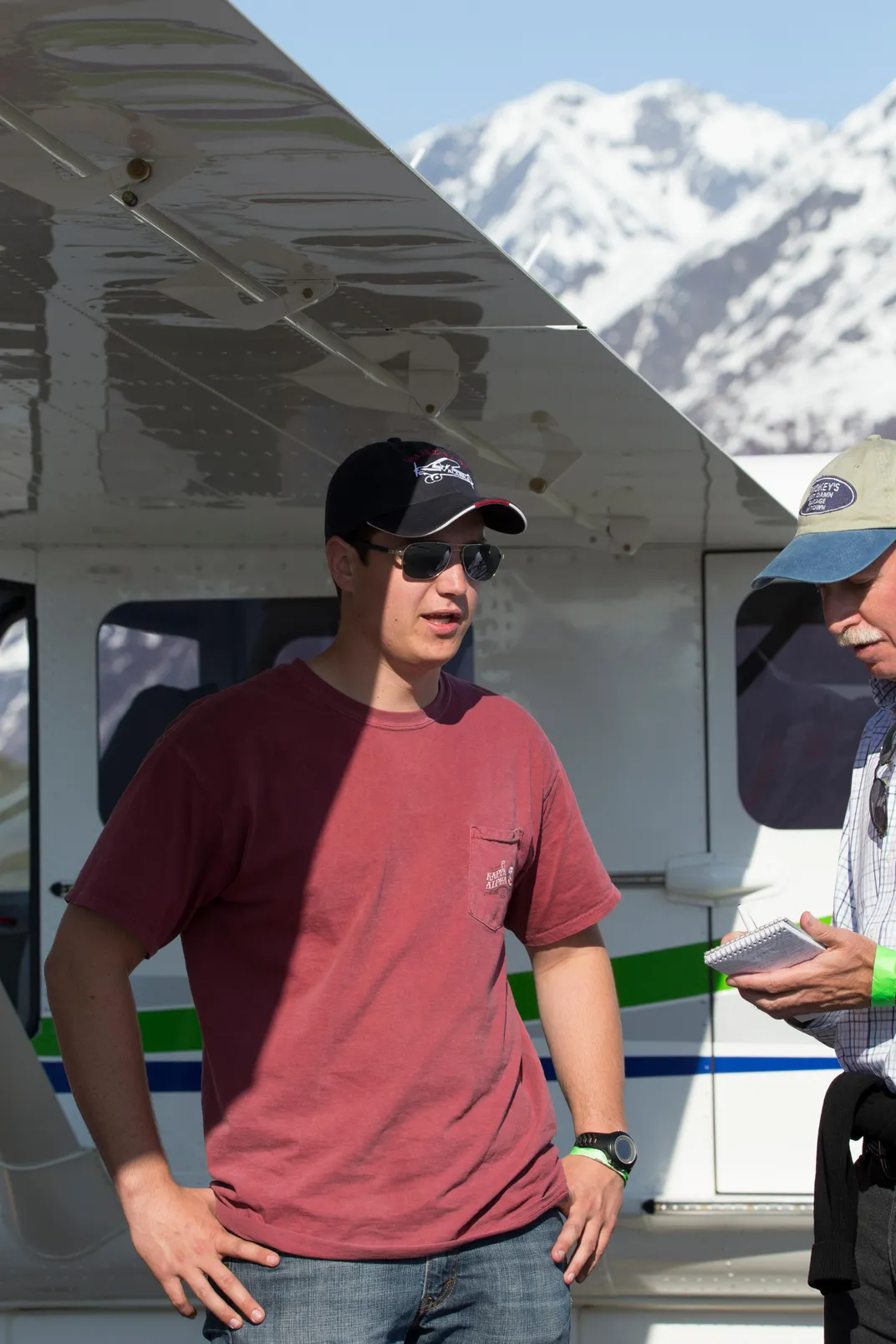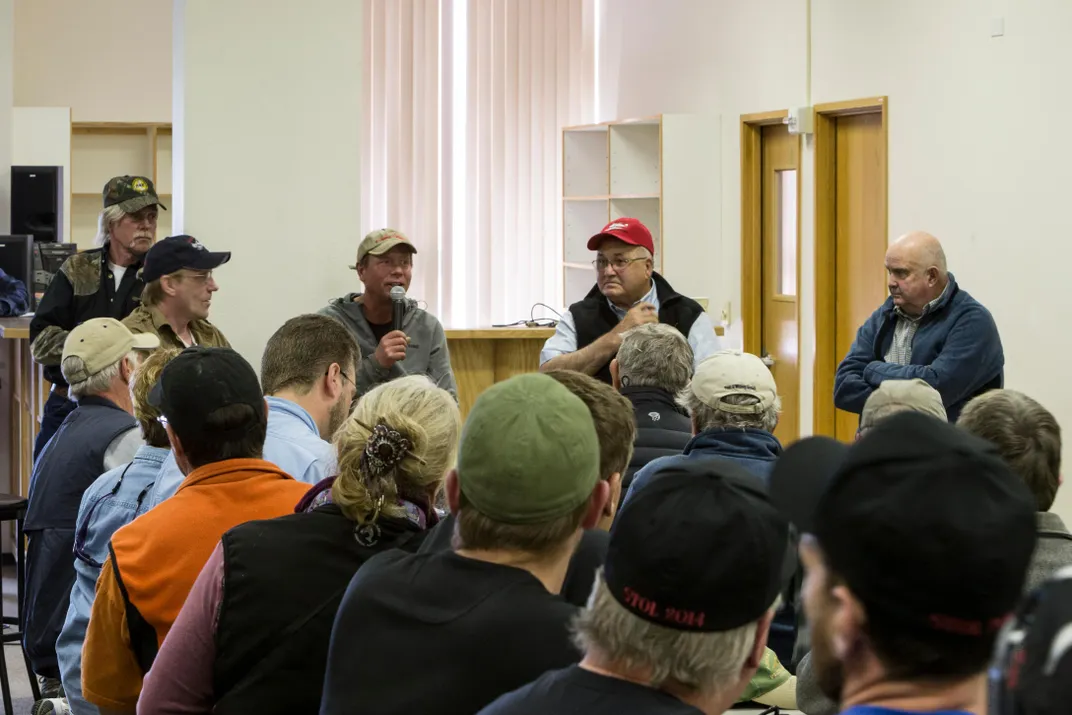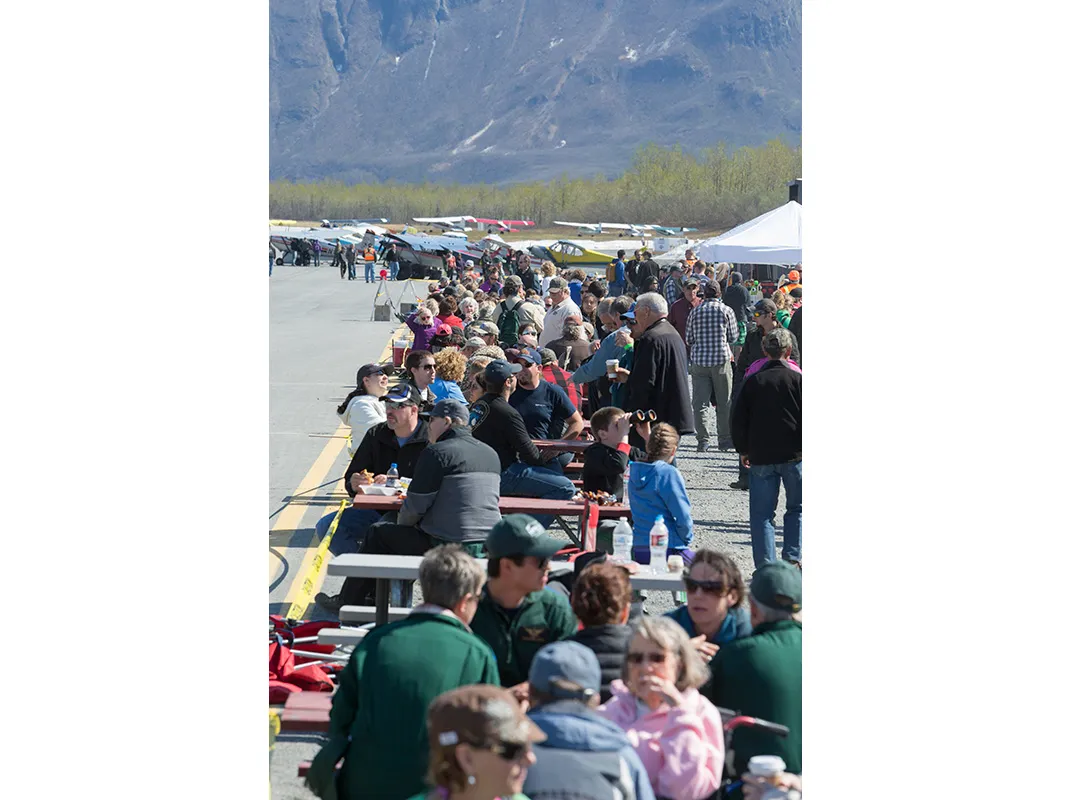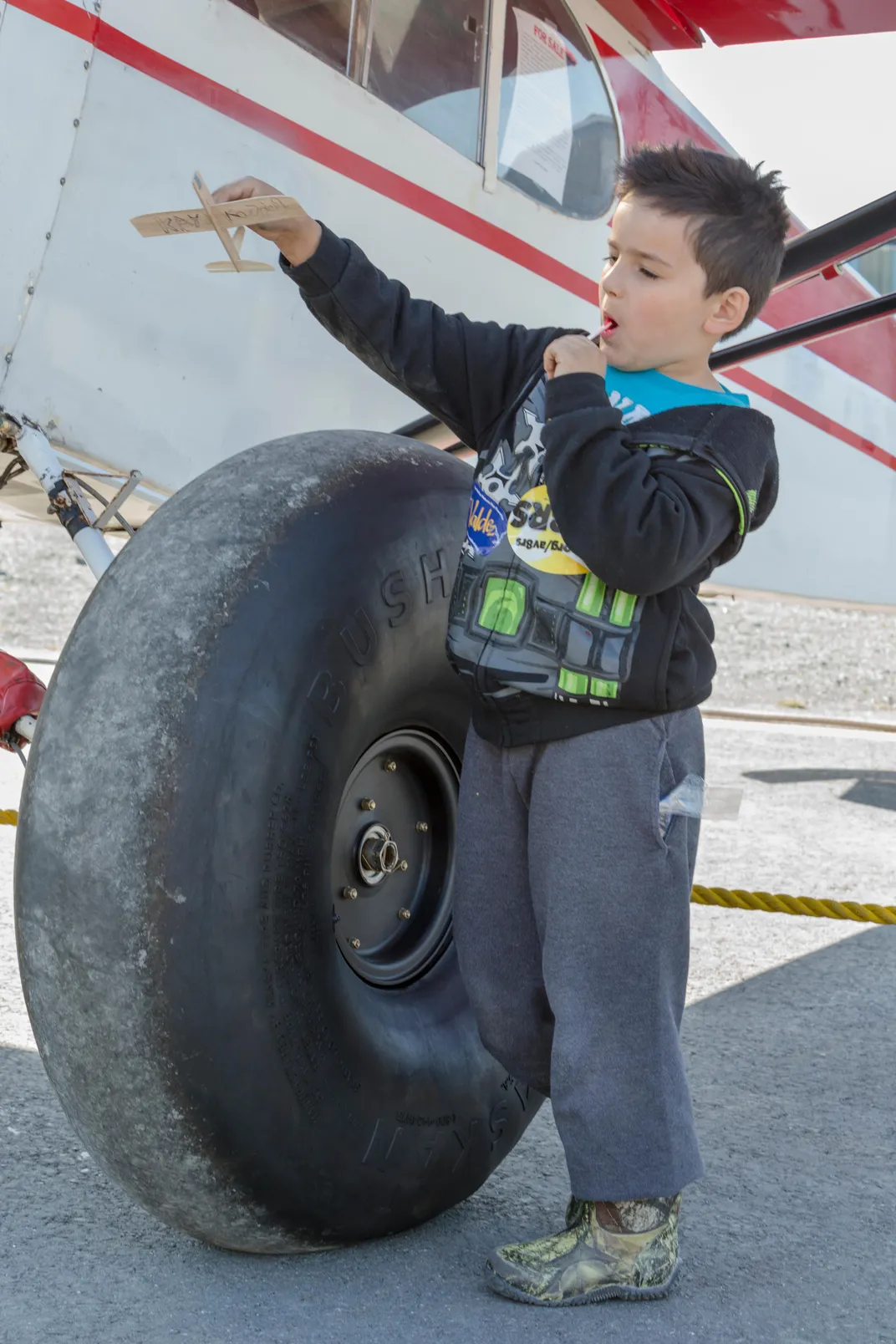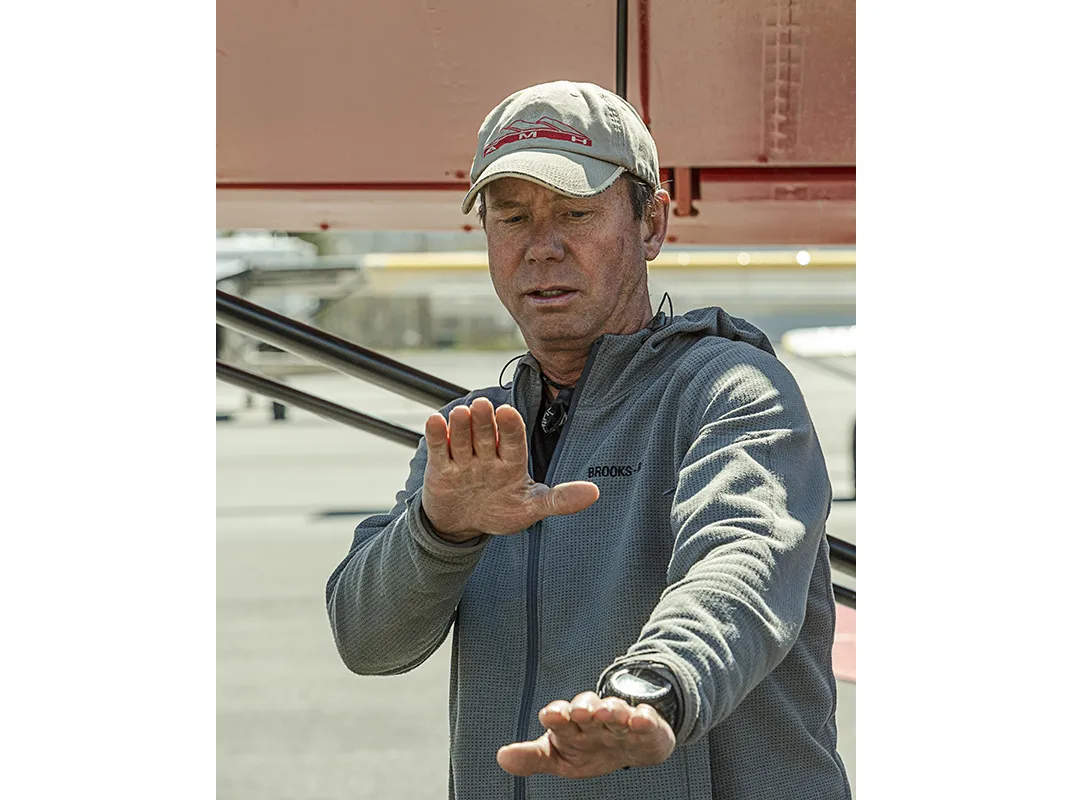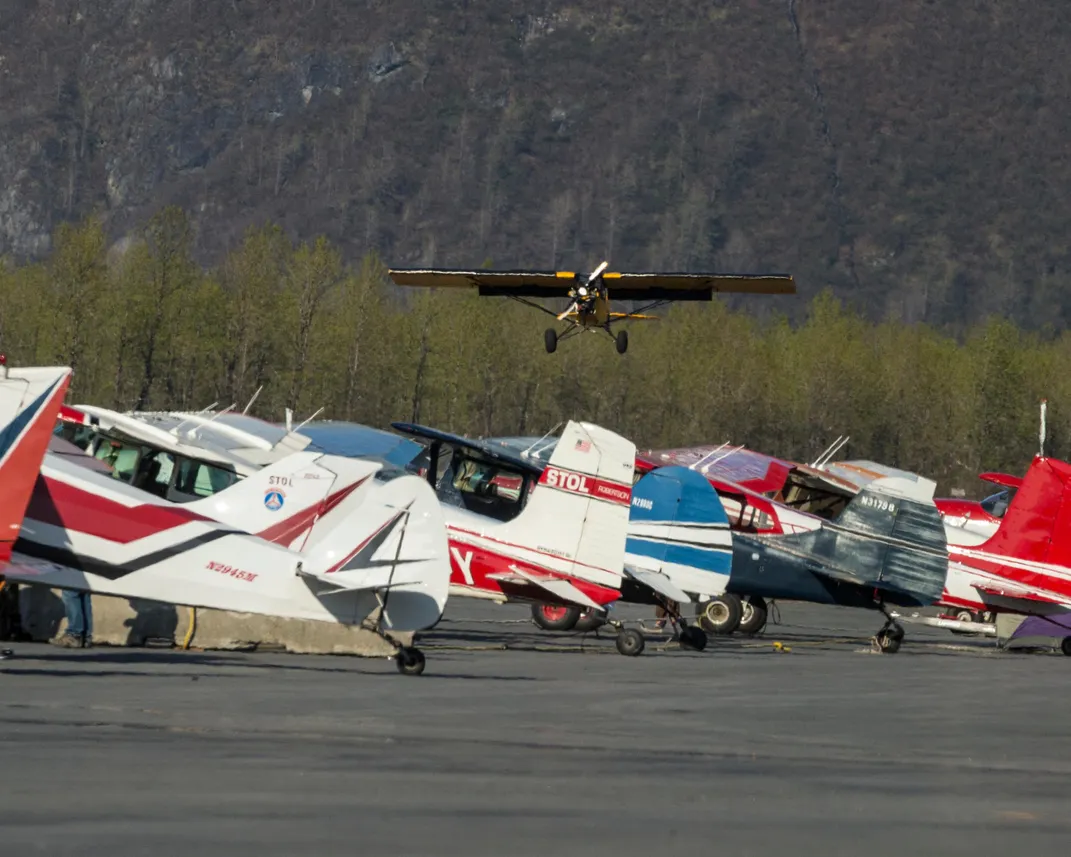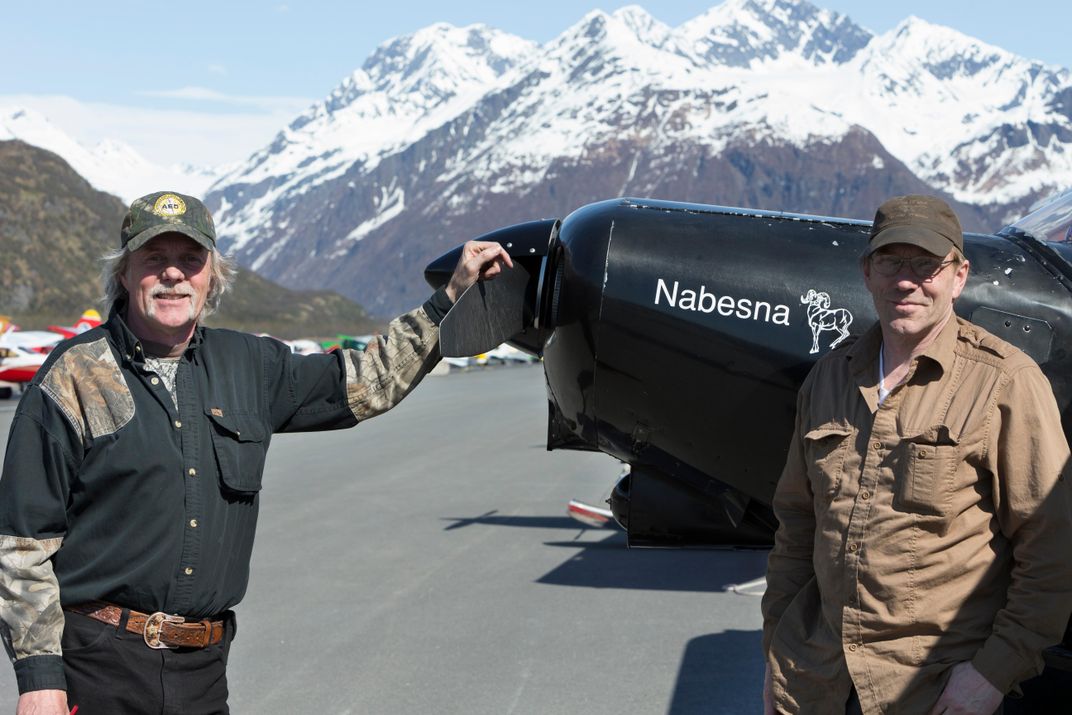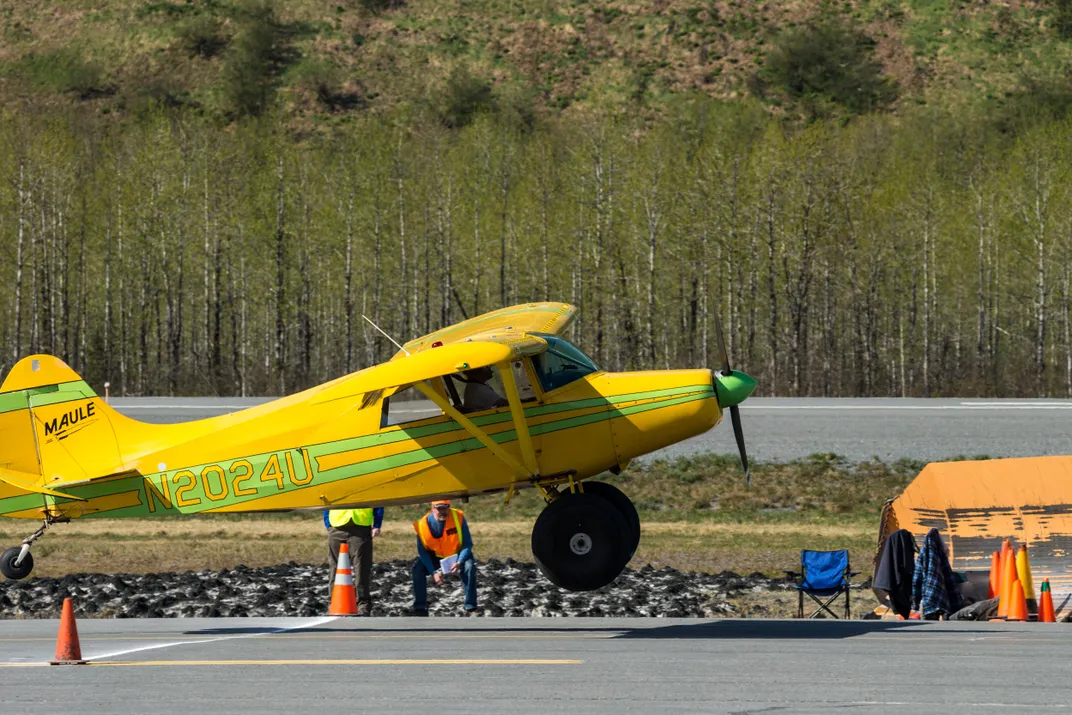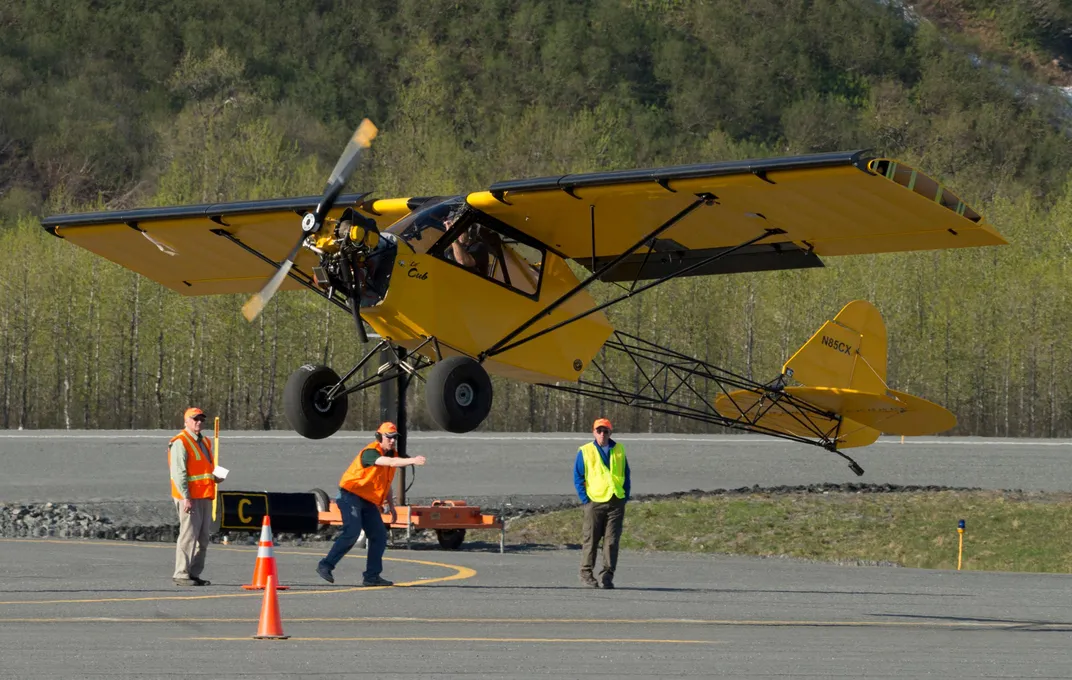The Bushplane Olympics
In Valdez, Alaska, the prize goes to the airplane that takes off and lands in the shortest distance.
After returning to the field, Breeden brings the airplane in low and impossibly slow. On his first run, he’d landed so hard that the PA announcer joked, “Bobby no longer has a spine.” On this, his second and final try, he again bounces the landing, then feathers the brake so deftly that the tail remains raised until the airplane comes to a full stop. Total distance: 55 feet. “I once landed shorter than that,” an old-timer says. “In a helicopter.”
With a combined distance for the takeoff and landing of 116 feet—116 feet!—Breeden retains his title, beating a number of skillful pilots who are also flying Super Cubs. But unlike most of his competitors, Breeden doesn’t have tens of thousands of hours in his logbook and grizzly bear trophies on his wall. He’s a baby-faced 20-year-old college junior studying drone technology at Embry-Riddle Aeronautical University in Daytona Beach, Florida.
“I quit sports in high school, and every day after school I would go out and fly,” he says. “After I saw the STOL competition video in 2010, I got hooked on bush flying.” He honed his skills not by landing on skis on treacherous glaciers or taking off in airplanes overloaded with freshly slaughtered moose but by practicing short takeoffs and landings on a grass field in Virginia with lines marked in paint.
His participation demonstrates that the Valdez competition is not just an annual reunion for members of the small but far-flung community of bush pilots, but also an experiment that tests the latest bush-flying technology. In addition, the get-together gives commercial pilots a chance to network in search of opportunities, and gives amateurs a classroom where they can hear potentially lifesaving tips from pros with decades of experience.
“You have to stay a little bit scared,” renowned seaplane pilot Vern Kingsford told a rapt audience during a panel discussion the morning before the STOL competition. When Kingsford moved to Alaska in 1975, he sought advice from old-timers who’d survived a lifetime of bush flying. (“The others weren’t available,” he says dryly.) His first stop was the home of fabled flier Bill Ellis. Ellis, a pilot and hunting guide in the Alaska wilderness in the 1950s, is gone now, but his rugged-looking sons Cole and Kirk are competing here at Valdez.
“We were lucky because we had Dad,” Kirk says. “He made a lot of mistakes, so he was able to beat them out of us.” His brother Cole chuckles, then adds: “We’re here to promote safety. We tell people what not to do. I tell them, ‘I’m only 20 years old. The white hair comes from flying around these mountains all my life.’ ”
Besides the panel discussions, the event includes a fly-in and an airshow—even a flour-bombing contest. But the big draw is the STOL competition. “You won’t find another event like this in the world,” says John Davis, an Aussie who moved to Alaska 20 years ago to work as an airline flight engineer and never left.
A generation ago, informal STOL competitions were held in small towns all over the state, but they fell victim to liability concerns. When the last of the shows, in the small down of Gulkana, called it quits, it appeared that an era had ended. But in 2004, civic leaders in Valdez resurrected the STOL-off in an effort to promote tourism before the summer season began. Because it was the only game in town, and because bush pilots weren’t busy in early May with fishing and hunting charters, most of the major players in the bush flying community began showing up, and the Valdez Fly-In developed its reputation for offbeat family fun.
Brady Lane, a videographer with the Experimental Aircraft Association, came here for the first time in 2010 to produce a video for the EAA website—the video that hooked Breeden on STOL. On YouTube, it’s attracted almost 300,000 views. Lane was so impressed by the event that he encouraged EAA to invite the STOL competitors to the group’s annual Oshkosh, Wisconsin fly-in. So this year, several Valdez regulars—led by Frank Knapp, the reigning champ in the alternate (read: experimental) bush class—flew their airplanes at EAA’s AirVenture. “We want to showcase this kind of flying because it’s so hard to get to Valdez,” Lane says.
Even by Alaskan standards, Valdez is off the beaten track. With a population of about 4,000, it isn’t even among the state’s 10 largest cities, though its location at the southern terminus of the Trans-Alaska Pipeline makes it one of the most important ports. The city occupies an idyllic spot on southern Prince William Sound, nestled between glaciers and mountains so majestic that they appear to have been Photoshopped into the landscape. Yet it’s best known for a pair of disasters. In 1964, the town was destroyed by the largest earthquake in American history. (The city was rebuilt a few miles from the original site.) And in 1989, it was the nearest site of the rupture of the Exxon Valdez oil tanker, which hit a reef about 27 miles offshore.
Valdez has a rich aviation history dating back to 1928, when Owen Meals—for whom one of the city’s major streets is named—started offering airplane rides for $10 a pop. Of course, flying comes with the territory in Alaska, which was transformed during the 1920s and ’30s when the dogsled teams that had been the major source of supply to remote towns and cities were replaced by airplanes (see “Alaska and the Airplane,” June/July 2013). To this day, great swaths of the largest state are accessible only by aircraft.
“Where I am, it’s true wilderness,” says Paul Claus. “You cannot get to where we live without an airplane. You’ve got to fly just to pick up the mail. I go daily to places no human has ever been before.” He adds wryly: “In fact, this is the only time all year I land on pavement—for a ‘bush’ competition.”
Professional bush pilots spend much of their time flying hunters and fishermen to locations that don’t have roads, much less airports. And they do it over and over and over, racking up countless short-field operations. “We might make 50 takeoffs and landings in one day,” says Kirk Ellis. Without their logbooks handy, Cole Ellis estimates that they’ve each got 20,000 hours under their belts.
Claus says those hours are not like flight time logged in an airliner. “That flight you took to get here from L.A.—that was numbers flying,” Claus says. “The next guy to get into that 737 will fly it the same way the guy before him did.” A bush pilot rarely makes the same flight twice; missions and conditions change, and the bush pilot adapts and improvises. “That is something the FAA doesn’t like—rightfully so—because it’s something you have to learn on your own,” says Claus.
A lot of that learning took place in a Super Cub. Although the type debuted in 1949—conceptually, it dates back to the Taylor E-2 Cub of 1930 and Piper J-3 Cub of 1937—its unrivaled agility, simplicity, and ruggedness keep it popular. Super Cubs account for 11 of the 13 entries in the bush class. “Piper made ’em right, I guess,” Kirk Ellis says as he stands next to his brother’s black 1968 Super Cub. Claus, meanwhile, is competing in a bright red 1953 model that he first flew when he was 16. “If I had all the money in the world and I could buy anything from a 747 to an A-Star helicopter, I’d choose a Super Cub,” says Claus. “They’re so much fun to fly. It’s like strapping on a pair of wings. My wife says that when I climb into it, I become a bird.”
But with only two seats and limited cargo area, Super Cubs aren’t family-friendly. So the vast majority of the 250 or so airplanes parked on the ramp are more prosaic Piper Cherokees, Beechcraft Bonanzas, and single-engine Cessnas of all descriptions.
“This is our minivan,” Jessica Madden says of the Piper Saratoga (a Cherokee derivative) flown by her husband, Peter, an aircraft mechanic. With them are their two daughters, three and five years old. Others have arrived in equally ordinary airplanes with newborn infants, dogs large and small, tents of all dimensions, and plenty of camping gear. Each morning the smell of bacon sizzling in cast-iron skillets wafts over the field. (Those who aren’t cooking for themselves can check out the vendors at the airport and buy local delicacies, including reindeer dogs and salmon jerky.)
When the action begins, a crowd of about 2,500 assembles beside the runway. The rules for the competition are refreshingly simple. Airplanes take off from a line in the middle of the taxiway. A handful of officials using nothing but their best judgment decide at what point the main wheels leave the ground on takeoff. Says fly-in president Joe Prax: “The judges’ qualifications are quick feet and good eyeballs.” Although white lines mark 50-foot intervals, the judging looks somewhat less than precise, but the judges are all pilots who have several years experience in the job.
For landings, the process is reversed—judges decide where the wheels touch—and if the mains touch down before the line, the run is invalidated. Each pilot gets two takeoffs and landings, and the lowest combined tally is his final score.
The morning of the STOL competition, the sky is brilliant blue and the weather is pleasantly temperate, but high, gusty winds make short landings tricky. After an Aeronca Champ ground-loops during morning practice, the organizers postpone the contest. “This isn’t the World Series,” Prax announces. “We want to fly safely.”
By mid-afternoon, the winds have died down enough to permit the event to get, well, off the ground. First up are the heats for the light and heavy touring airplanes, mostly Cessna 170- and 180-series workhorses, some with tricycle gear rather than tail wheels. Winners clock in at 219 feet and 242 feet, respectively, both of which are plenty impressive. But the two bush classes are what everybody is waiting for.
Ironically, the professional pilots agree that the STOL competition doesn’t have much to do with their real-world flying. Obviously, stick-and-rudder skills are important, but nobody carrying a passenger and cargo is ever going to take off in 19 feet—yes, 19 feet, which Claus once managed while taking off into a stiff headwind at Valdez. Every bush pilot will tell you: The major challenge in their kind of flying is mitigating risk, whether from the weather or hazardous terrain or pushy clients.
Like rodeos, STOL competitions began as informal contests for bragging rights. But in time, the competition became an end in itself. Bobby Breeden and his father, Bob—two extremely talented amateurs—show up with a shared Super Cub that’s been optimized for Valdez, and they’ve been practicing short takeoffs and landings for weeks. The Breedens finish 1-2, with Claus 3rd in an airplane that doesn’t carry a single electrical component.
But the climax of the event is the alternate bush class, featuring airplanes built specifically for STOL operations. First up is Steve Henry in a Just Aircraft Super STOL, a kitplane with leading edge slots and extra-heavy-duty landing gear. Henry, a Valdez rookie, lost an exhaust pipe on the flight from Idaho, and when the fuselage started burning, he was forced to land on an Alaskan highway. No problem, he says: “Even if I hit the ground at 500 feet a minute, it feels like I greased the landing.”
On the start line, when Henry lifts the tail, the airplane rotates so far forward that the crowd collectively gasps. Then he vaults into the air in 71 feet. Good but not great.
Next up is defending champ Frank Knapp, whose airplane—rebuilt in three months after being largely destroyed in a hangar fire—features the fundamental architecture of a Super Cub, scads of weight-saving carbon-fiber components, and a fully exposed engine and rear fuselage. “It’s the slowest thing I’ve ever seen,” Henry says wistfully. Cruise speed is 62 mph. “It’s just a motor scooter,” Knapp says with a contented smile.
Knapp scoots into the air in a mere 48 feet—the shortest takeoff of the day. But then Josh Peppered rolls to the line in an SQ-2, another highly modified, but much larger, modern take on the Super Cub. As he begins his takeoff roll, the engine thrum suddenly deepens from a squirt of nitrous oxide, and the extra 100 horsepower boosts him into the air in 43 feet. “That’s crazy!” somebody shouts over the crowd’s applause. “I don’t think his wheels even turned!”
But as usual, the competition comes down to the landing. On his final pass, Knapp brings his bright yellow scooter down so slowly it looks less like an airplane than an insect hovering in mid-air. “I’ve seen parents rolling their baby strollers faster than that,” the announcer declares. When he reaches the line, Knapp slams his airplane down to the ground and whoa’s it to a halt in 35 feet. A minute later, Peppered manages an impressive landing of his own—46 feet—but in the final standings, he comes up a bit short—or long, in this case.
When he climbs out of his airplane, the ebullient Knapp throws back his head and roars like a quarterback who’s just won the Super Bowl. As far as the competitors and spectators in Valdez are concerned, that’s exactly what he’s done.
